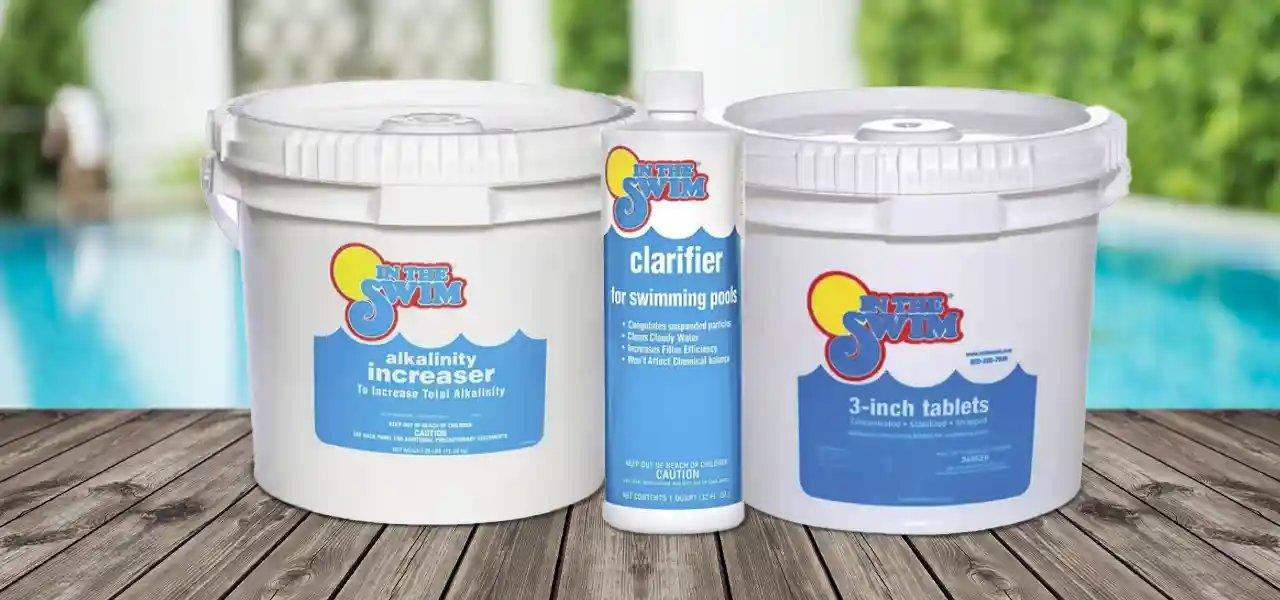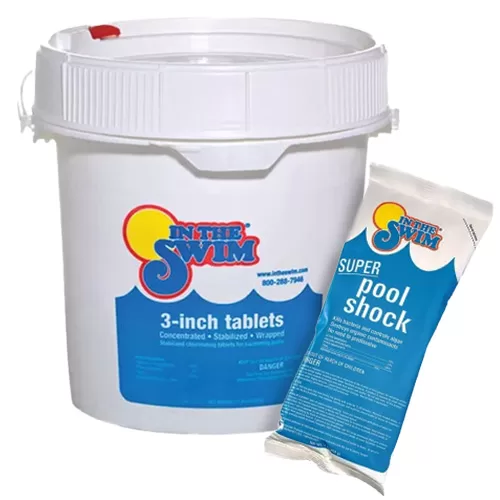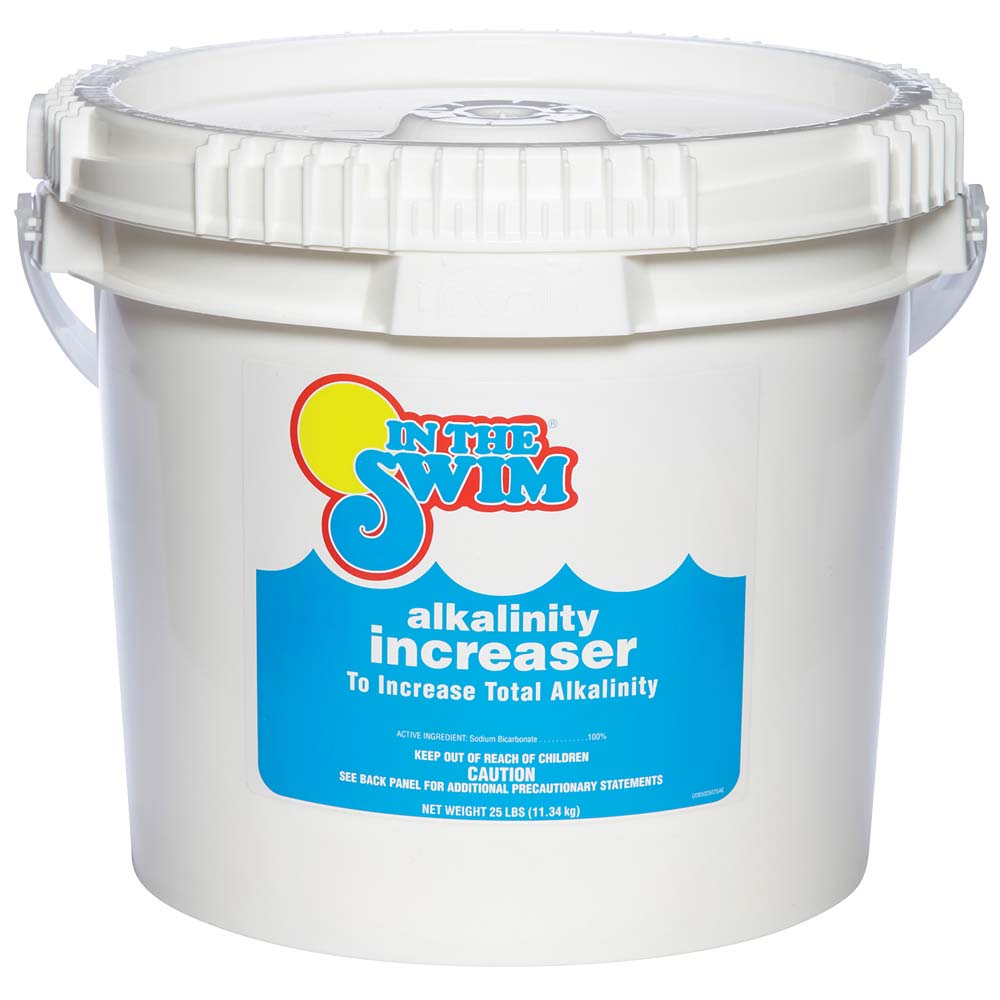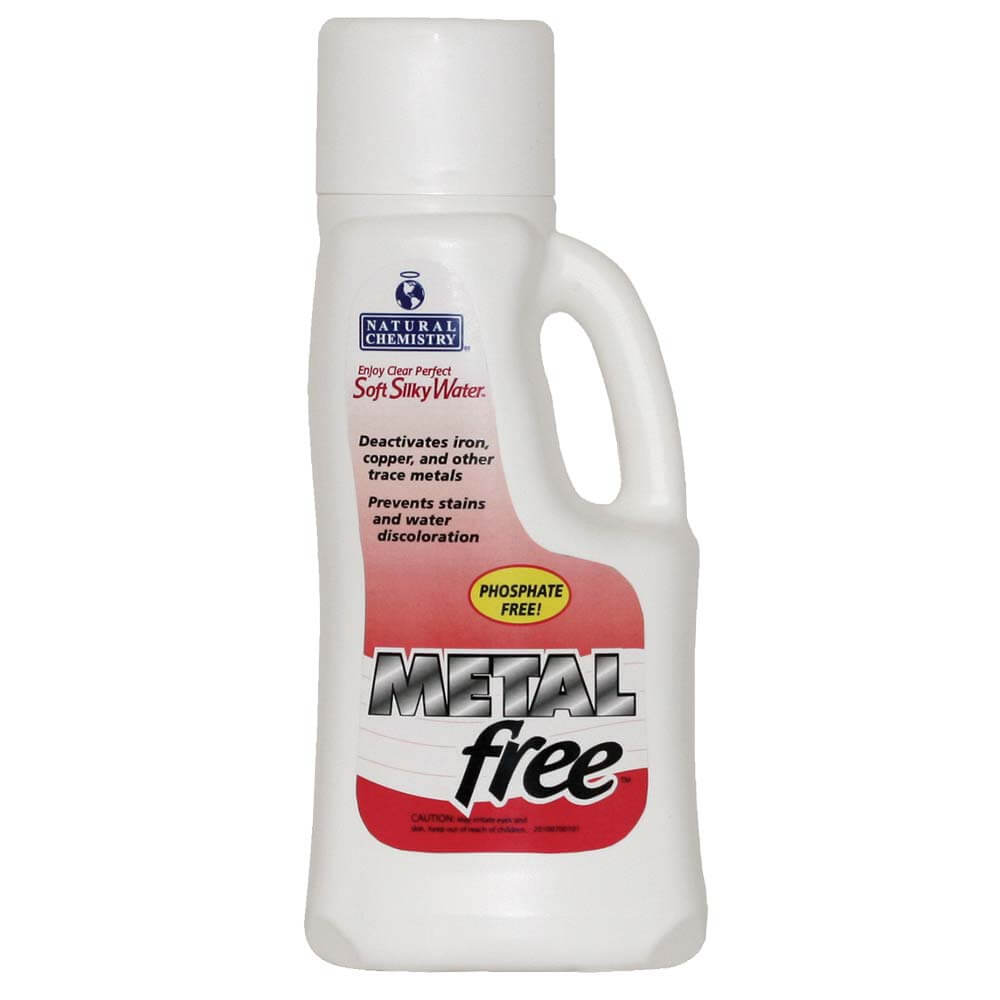FREE Standard Shipping On All Orders $100 or More!*

Pool Chemicals: How Much of What is Needed?
With so many pool chemicals out there, how do you know which ones to use for your pool? Well, thankfully, the world of pool chemicals isn't as confusing as you might think. When broken down into three categories, sanitizers, balancers, and specialty chemicals, it's much easier to figure out what chemicals to use in your pool.
Sanitizers
Keeping pool chlorine levels above 1.0 ppm at all times is of paramount importance to prevent water quality issues, and growth of algae and bacteria. Here's how to estimate how many chlorine tablets and chlorine shock the average pool would need for the entire summer.
Chlorine Tablets
Each tablet weighs 7 oz, and is capable of adding 5 ppm of free chlorine, per 10,000 gallons.
Calculate: 2 tablets for each 10,000 gallons, per week.
Example: 5 tablets per week for 20 weeks, or 100 tablets.
Recommendation: Our 50 pound chlorine bucket has 114 tablets, which would be close enough for most inground pools. If you use a mineral purifier, ozone or UV, you will only need half as many chlorine tablets, so the 25 pound chlorine tabs should meet your needs.
Pool Shock
Each 1 lb. bag of pool shock is capable of adding 8-9 ppm of free chlorine, per 10000 gallons.
Calculate: 1 bag for each 10,000 gallons, per week or per month.
Example: 2.5 bags per week for 20 weeks, or 50 lbs. Or 2.5 bags per month for 5 months, or 12.5 lbs.
Recommendation: Get a 50 lb bucket of shock chlorine if you expect to shock weekly, or for 5 monthly shocks, you could buy the 12 Pack of pool shock. And if you are somewhere in between weekly and monthly shocking, go with the 24 Pack of pool shock.
Water Balancers
Water balance chemical needs are more difficult to forecast, unless you have records of past water tests and adjustments. Keeping a pool test log, where you record test results and amounts of chemicals added, can be a useful tool for projecting future chemical needs.
pH Increaser & pH Decreaser
Most pools tend to need either pH Up or pH Down more often, but pool owners should have both on hand. Pool pH Decreaser is also used to lower Total Alkalinity, and also for pool stain removal.
Each 1 lb. of pH Increaser or pH Reducer will adjust the pH .2 or .3 clicks on the pH scale, per 10,000 gallons. 7.4-7.6 is the recommended range.
Total Alkalinity Increaser
Each 1 lb. of Total Alkalinity Increaser will raise total alkalinity by 8 ppm, per 10000 gallons. 80-120 ppm is the recommended range.
Calcium Hardness Increaser
Each 1 lb. of Calcium Hardness Increaser will raise hardness by 8 ppm, per 10000 gallons. 200-400 ppm is the recommended range.
Cyanuric Acid Increaser
Each 1 lb. of Cyanuric Acid, also called stabilizer or conditioner, will raise levels by 12 ppm, per 10000 gallons. 30-50 ppm is the recommended range.
Specialty Chemicals
Much like water balance chemicals, pool specialty chemicals are often not known to be needed until you need them! However, if you have had trouble in the past with algae, cloudy water, stains, scale or scum line deposits, this category of pool chemicals has what you need.
Pool Algaecide:
For control of algae, suppress it with a weekly dosage of our safe to use polymer algaecide. Attacks algae from the outside in, penetrating the outer layers of algae cells.
Initial Dosage: 12 oz. per 10000 gallons.
Maintenance Dosage: 3 oz. per 10000 gallons, weekly.
Example: Using our Algaecide 60, 1 Qt bottle initially, then 7.5 oz per week for 20 weeks.
Recommendation: 6 Pack of Algaecide 60, or save with our 1/2 Gal (2 Qt) size, available in case quantity.
Clarifiers:
Pools with undersized or poor performing filters can benefit from using clarifiers. Attracts suspended particles, clumping tiny bits into larger, more easily filtered sizes.
Initial Dosage: 4 oz. per 10000 gallons.
Maintenance Dosage: 2 oz. per 10000 gallons, weekly.
Example: Using our Super Clarifier, 10 oz initially, then 5 oz per week, for 20 weeks.
Recommendation: 4 bottles of Super Clarifier, or save with our 1/2 Gal (2 Qt) size, available in case quantity.
Enzymes:
Pools with oily scum lines, high chlorine demand, and/or poor water clarity can benefit from enzymes. Enzymes are pool chemicals that remove organic debris from the water and continuously cleans your pool filter.
Initial Dosage: 5 oz. per 10000 gallons.
Maintenance Dosage: 5 oz. per 10000 gallons, weekly.
Example: Using Natural Chemistry's Pool Perfect + PHOSfree, 12.5 oz initially, then 12.5 oz per week, for 20 weeks.
Recommendation: 2 - 3 Ltr bottles of Pool Perfect, or save with our 2 x 3L bundle. See also Pool Magic Spring & Fall.
Phosphate Remover:
Pools with recurring algae problems often have high levels of phosphates and nitrates, which is a tasty food source for algae. Remove the phosphates, remove the algae.
Initial Dosage: 5 oz. per 10000 gallons.
Maintenance Dosage: 5 oz. per 10000 gallons, weekly.
Example: Using Natural Chemistry's PhosFree, 12.5 oz initially, then 12.5 oz per week, for 20 weeks.
Recommendation: 2 - 3 Ltr bottles of PhosFree, or save with our 2 x 3L bundle.
Stain & Scale Prevention:
Sequestering agent pool chemicals work great for pool owners who want to protect their pool surfaces from metallic stains and mineral scale.
Initial Dosage: 16 oz. per 10000 gallons.
Maintenance Dosage: 2 oz. per 10000 gallons, weekly.
Example: Using our Super Stain Away, 48 oz initially, then 5 oz per week, for 20 weeks.
Recommendation: 4 - 1 Qt bottles or save with our 4 x 1 Qt bundle. See also Natural Chemistry Metal Free or Stain Free.
There are other chemicals that may be needed, such as Filter Cleaner, or D.E. Filter Powder, and don't forget to replace your test kit reagents and strips! Many of our customers like to buy our Chemical Value Packs, for spring start-up kits and summer chemical packages. You may find all you need in one box!
With over 100 different pool chemicals available, the choice can be overwhelming! That's probably why I like to group pool chemicals into 3 categories: sanitizers, balancers, and specialty chemicals.


